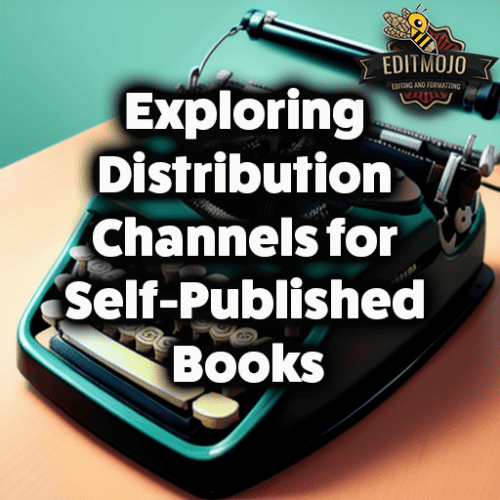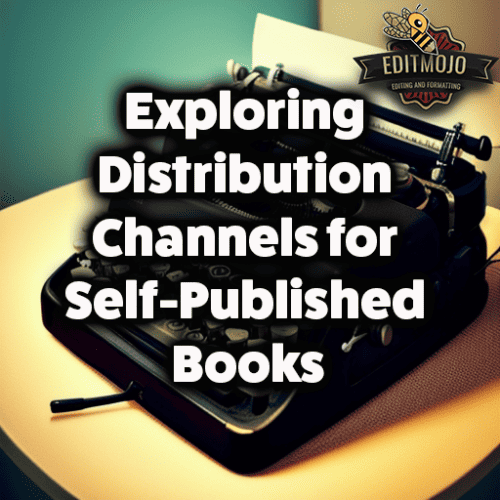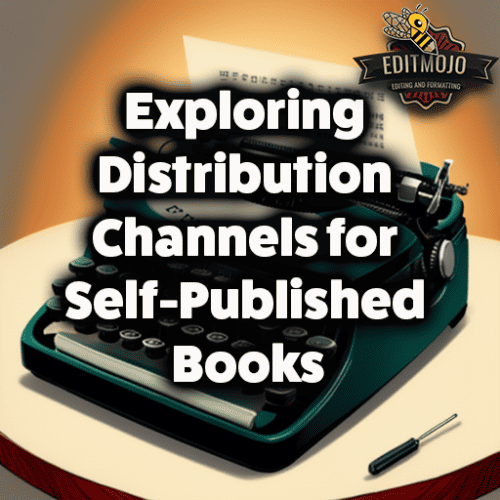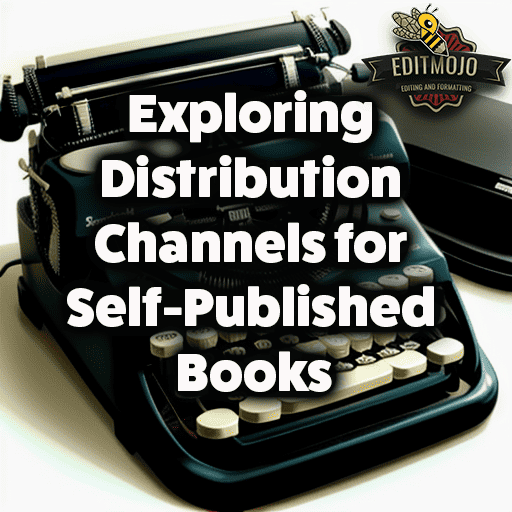Exploring Distribution Channels for Self-Published Books
Exploring Distribution Channels for Self-Published Books. Distribution channels are the lifeblood of the publishing world. They provide the intricate network that carries your labor of love—your book—from your mind to your readers’ hands. For self-published authors, understanding these channels is crucial. With a firm grasp of distribution channels, you can ensure your book finds its audience, converting your creativity into a successful venture.
The importance of reaching readers in self-publishing cannot be overstated. It’s the key difference between a manuscript collecting virtual dust on a hard drive and a living story shared and loved by readers.
This post will delve into the various aspects of distribution channels in self-publishing. We will examine their evolution, the importance of understanding your readers, different types of distribution channels, the pros and cons of each, and successful case studies. We will also look at emerging trends and strategies to maximize your reach.
Key Takeaways
| Topic | Key Takeaway |
|---|---|
| Evolution of Book Distribution | The rise of digital platforms has allowed authors to sidestep traditional intermediaries, democratizing the publishing process and leading to a diversification of distribution channels. |
| Understanding Your Readers | Identifying your target audience, understanding their reading habits and preferred platforms, and comprehending the consumer journey in book buying are critical to selecting the right distribution channels. |
| Overview of Distribution Channels | Distribution channels for self-published authors include online platforms (like Amazon KDP, Smashwords), print-on-demand services (IngramSpark, Lulu), brick and mortar bookstores, libraries and educational institutions, and non-traditional outlets (book clubs, conventions). |
| Pros and Cons of Each Distribution Channel | Each distribution channel comes with its unique pros and cons. Online platforms offer high reach but might require exclusivity; Print-on-Demand services offer convenience but may compromise on print quality; Physical bookstores add legitimacy but are hard to break into; Libraries provide a diverse audience but have strict requirements; Non-traditional outlets allow for personal engagement but require significant effort. |
| Emerging Trends in Book Distribution | Emerging trends like the rise of audio and multi-format books, subscription services, crowdfunding as a pre-launch strategy, and the potential impact of blockchain and NFTs offer new opportunities for self-publishers. |
II. The Evolution of Book Distribution: A Brief History
A. Traditional Book Distribution Model
In the past, book distribution was a laborious process that involved several key players. Authors wrote the books, publishers curated and edited them, distributors sent them across the country (or world), and bookstores sold them to readers. This model gave birth to literary giants and classic works that have stood the test of time.

B. The Rise of Self-Publishing and the Digital Revolution
With the advent of the internet and advances in digital technology, a power shift began to occur. Authors discovered that they could sidestep some of the traditional intermediaries, taking on the roles of publisher and distributor themselves. Thus, self-publishing was born.
Platforms like Amazon’s Kindle Direct Publishing (KDP) and Smashwords enabled authors to upload their work and distribute it to millions of readers globally. The digital revolution also made it possible for authors to market their books directly to their audience via social media and personal websites.
C. Diversification of Distribution Channels
This paradigm shift has led to a diversification of distribution channels, effectively democratizing the publishing landscape. Today, authors can choose to distribute their books via online platforms, print-on-demand services, physical bookstores, and even non-traditional outlets like book clubs and conventions.
III. Understanding Your Readers: Key to Selecting Distribution Channels
A. Identifying Your Target Audience
Knowing your target audience is the first step in any successful book distribution strategy. You need to understand who your readers are, their reading habits, and their preferred platforms. For example, young adult readers might prefer e-books and online platforms, while an older demographic might still favor physical books and traditional bookstores.
B. Understanding the Consumer Journey in Book Buying
The consumer journey in book buying is not as straightforward as it once was. With so many options available, readers often weave their way through a complex web of channels before finally purchasing a book. They might read reviews online, download a sample chapter, follow the author on social media, or even listen to a podcast interview with the author before deciding to buy the book.
C. Influencing Your Choice of Distribution Channels
Your understanding of your audience and their consumer journey should influence your choice of distribution channels. For instance, if your audience is primarily online, it would make sense to prioritize online platforms like KDP and Smashwords over physical bookstores.

IV. Overview of Distribution Channels for Self-Published Books
Today’s self-published author has a plethora of distribution channels at their disposal. Understanding these channels and their unique characteristics is crucial to creating an effective distribution strategy.
A. Online Platforms
Online platforms like Amazon KDP and Smashwords offer vast reach and convenience. They are the go-to channels for most self-published authors, allowing them to reach millions of readers globally with just a few clicks.
B. Print-on-Demand Services
Print-on-demand services like IngramSpark and Lulu are also popular choices. They allow you to print books as needed, reducing upfront costs and eliminating the need for inventory management.
C. Brick and Mortar Bookstores
While getting self-published books into physical bookstores can be challenging, it’s not impossible. Independent bookstores, in particular, can be open to stocking self-published books, especially those that align with their store’s theme or local interest.
D. Libraries and Educational Institutions
Libraries and educational institutions can be valuable distribution channels. They provide access to a broad and diverse audience and can generate consistent, albeit small, sales.
E. Non-Traditional Outlets
Lastly, non-traditional outlets like book clubs, conventions, and speaker engagements offer unique opportunities to connect directly with readers. They allow you to showcase your work in a more personal setting, often leading to stronger reader connections and word-of-mouth promotion.
V. Deep Dive: Pros and Cons of Each Distribution Channel
While the options are plentiful, it’s essential to understand the pros and cons of each distribution channel to make informed decisions.
A. Online Platforms
Online platforms provide unparalleled reach and simplicity, but they often come with trade-offs. For example, Amazon KDP offers high royalty rates but requires exclusivity for participation in their Kindle Unlimited program. On the other hand, Smashwords distributes to a wide range of retailers but offers lower royalty rates.
B. Print-on-Demand Services
Print-on-demand services are cost-effective and convenient, but the quality of print and binding might not be as high as traditional print. Also, while they offer broad distribution, visibility in such vast networks can be a challenge.

C. Brick and Mortar Bookstores
Getting your book into physical bookstores provides a sense of legitimacy and access to customers who prefer browsing in a physical store. However, it’s a challenging process involving negotiations on consignment agreements, discounts, and return policies.
D. Libraries and Educational Institutions
Libraries and educational institutions offer a unique chance to reach readers, but it can be difficult to get your book into their collection. They often have strict requirements and can be challenging to approach without an established reputation or through a recognized distributor.
E. Non-Traditional Outlets
Non-traditional outlets can provide direct engagement with readers but require significant effort and often rely on your ability to sell in person.
VI. Case Studies: Success Stories in Self-Publishing Distribution
Throughout the self-publishing landscape, there are success stories that can inspire and inform your distribution strategy.
For instance, E. L. James, the author of the Fifty Shades series, initially self-published her books online before they were picked up by a traditional publisher. Her understanding of her target audience and effective use of online platforms led to viral success.
Another notable example is Andy Weir, who initially published his novel, The Martian, chapter by chapter on his personal blog. The positive reader response eventually led him to publish it as a complete e-book, which was later picked up by a traditional publisher and adapted into a blockbuster movie.
VII. Strategies to Maximize Reach Across Distribution Channels
To maximize your reach, consider strategies such as leveraging social media and online marketing to drive book sales, cross-promoting different book formats, and building relationships with bookstores, librarians, and influencers in your genre.
Participating in literary events and communities can also boost your visibility. For instance, attending writer’s conventions, joining online author communities, or participating in book club discussions can help you connect with potential readers.
VIII. Emerging Trends in Book Distribution Channels
As technology continues to evolve, so do book distribution channels. The rise of audio and multi-format books offers new opportunities for self-publishers. Platforms like Audible are making it easier than ever to produce and distribute audiobooks, reaching readers who prefer to listen rather than read.
Subscription services like Kindle Unlimited and Scribd also offer potential revenue streams for self-publishers.
Crowdfunding platforms like Kickstarter and Indiegogo can also serve as pre-launch distribution channels, allowing authors to gauge interest and secure funding for their books before official publication.
Furthermore, emerging technologies like blockchain and NFTs might shape the future of book distribution, potentially offering new methods of proving authenticity and ownership, and creating unique marketing opportunities.
IX. Conclusion: Crafting Your Personalized Distribution Strategy
To navigate the diverse landscape of distribution channels, you must craft a personalized strategy. This strategy should consider your target audience, their habits and preferences, and the unique advantages and disadvantages of each channel.
Remember, the world of self-publishing is dynamic. It’s essential to be flexible, adapt to changes, and continually learn and explore new possibilities.
X. Resources and Tools for Self-Publishers
Here are some resources to assist you in your self-publishing journey:
- The Alliance of Independent Authors: Offers advice and resources for independent authors.
- The Creative Penn: Offers advice on writing, self-publishing, book marketing, and creative entrepreneurship.
- Book Marketing Tools: Offers tools, tips, and strategies to help self-published authors succeed.
- Author Marketing Club: Offers tools and training for self-published authors.
Feel free to share your experiences, insights, and questions in the comments. After all, one of the greatest strengths of the self-publishing community is its willingness to share knowledge and support one another.
Top Five Questions and Answers (Exploring Distribution Channels for Self-Published Books)
What is the importance of distribution channels in self-publishing?
- Distribution channels are crucial in self-publishing as they carry your book from your mind to the readers’ hands. Understanding them can help ensure your book finds its audience, converting your creativity into a successful venture.
What has been the impact of digital revolution on book distribution?
- The digital revolution has democratized the publishing process, allowing authors to take on the roles of publishers and distributors themselves. Platforms like Amazon KDP and Smashwords have made it possible for authors to distribute their work globally with ease.
How can understanding your readers influence your choice of distribution channels?
- By understanding your readers’ demographics, reading habits, and preferred platforms, you can choose the most effective distribution channels. For example, if your audience primarily engages online, it would make sense to prioritize online platforms.
What are some of the emerging trends in book distribution channels?
- Some emerging trends include the rise of audio and multi-format books, subscription services for books, crowdfunding as a distribution strategy, and the potential impact of blockchain and NFTs on book distribution.
How can a self-published author maximize their reach across distribution channels?
- Authors can maximize their reach by leveraging social media and online marketing, cross-promoting different book formats, building relationships with bookstores, librarians, and influencers, and participating in literary events and communities.
